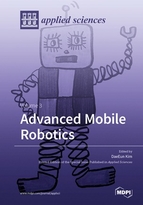Advanced Mobile Robotics
A special issue of Applied Sciences (ISSN 2076-3417). This special issue belongs to the section "Mechanical Engineering".
Deadline for manuscript submissions: closed (31 December 2018) | Viewed by 287803
Special Issue Editor
Interests: biologically inspired robotics; mobile robots; biosensors; neural networks; evolutionary computation
Special Issues, Collections and Topics in MDPI journals
Special Issue Information
Dear Colleagues,
Mobile robotics is a challenging issue as it is a multidisciplinary field covering electrical engineering, mechanical engineering, computer science, cognitive science and social science. It is involved with the design of automated robots in mobility, in combination with artificial intelligence, vision and sensor technologies. Mobile robots are widely used for surveillance, guidance, transportation and entertainment tasks, as well as medical applications, and provide an emerging market with great potential.
To address such challenges, this Special Issue intends to handle some recent development of mobile robots and their research, and also to enhance studies on the fundamental problems observed in mobile robots. Various multidisciplinary approaches or integrative contributions including navigation, learning and adaptation, networked system, biologically inspired robots and cognitive methods are also welcome to this Special Issue from a research perspective and an application perspective.
Potential topics include, but are not limited to:
- Motion control of mobile robots, aerial robots/vehicles, and space robots
- Robot navigation, localization and mapping
- Robot vision and 3D sensing
- Active perception
- Networked robots
- Swarm robotics
- Biologically-inspired robots
- Behavior-based robotics
- Cognitive robotics
- Learning and adaptation in robots
- Human–robot interaction
- Control architecture for industrial/commercial robots
Prof. Dr. DaeEun Kim
Guest Editor
Manuscript Submission Information
Manuscripts should be submitted online at www.mdpi.com by registering and logging in to this website. Once you are registered, click here to go to the submission form. Manuscripts can be submitted until the deadline. All submissions that pass pre-check are peer-reviewed. Accepted papers will be published continuously in the journal (as soon as accepted) and will be listed together on the special issue website. Research articles, review articles as well as short communications are invited. For planned papers, a title and short abstract (about 100 words) can be sent to the Editorial Office for announcement on this website.
Submitted manuscripts should not have been published previously, nor be under consideration for publication elsewhere (except conference proceedings papers). All manuscripts are thoroughly refereed through a single-blind peer-review process. A guide for authors and other relevant information for submission of manuscripts is available on the Instructions for Authors page. Applied Sciences is an international peer-reviewed open access semimonthly journal published by MDPI.
Please visit the Instructions for Authors page before submitting a manuscript. The Article Processing Charge (APC) for publication in this open access journal is 2400 CHF (Swiss Francs). Submitted papers should be well formatted and use good English. Authors may use MDPI's English editing service prior to publication or during author revisions.
Keywords
- mobile robots
- navigation
- vision
- networked robots
- biorobotics
- cognitive robots






